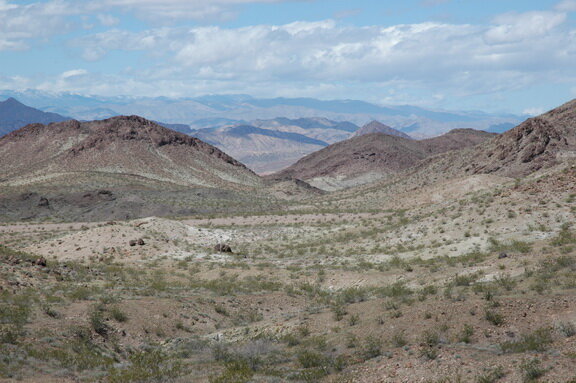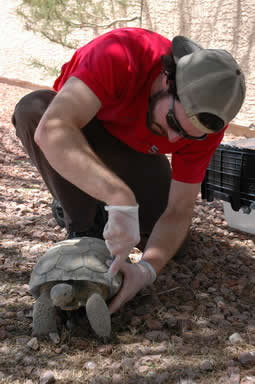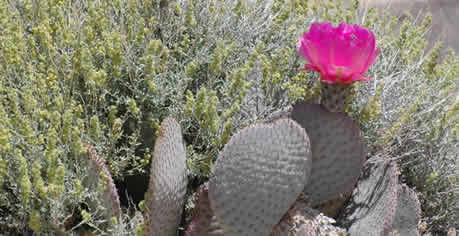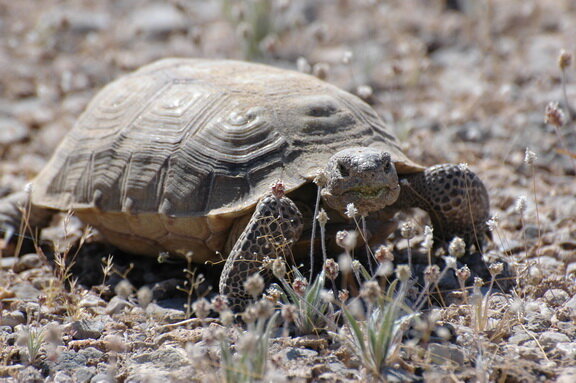Desert Tortoise
Gopherus agassizii
Desert Tortoise Monitoring
The desert tortoise (Gopherus agassizii) is primarily found within the Mojave and Sonoran Deserts of southern California, southern Nevada, and southwestern Utah. Tortoises are impacted by habitat loss, disease, predation, on- and off-road vehicle traffic, and livestock grazing. Climate change further threatens the continued existence of desert tortoises and the persistence of suitable habitat. Such impacts resulted in the listing of the Mojave Desert population as threatened under the Endangered Species Act in 1990. Delisting may only proceed when population trends are stable or increasing for at least one tortoise generation (25 years). Long-term monitoring is necessary to determine population trends.
In accordance with actions outlined in the October 2004 Desert Tortoise Recovery Plan Assessment, the United States Fish and Wildlife Service (USFWS) established the Desert Tortoise Recovery Office (DTRO) to address population declines and focus on the recovery and delisting of the species. The USFWS began its current range-wide monitoring program for the Mojave population of the desert tortoise in 2001. It is an intensive multi-faceted program occurring simultaneously in Mojave and Colorado deserts of California, Nevada, Arizona, and Utah.
The Institute for Wildlife Studies assisted USFWS by conducting monitoring and related activities in Nevada and California. Monitoring involved obtaining radio-telemetry locations from tagged tortoises and line distance sampling (counting tortoises found by walking 12 km transects each day). Desert tortoises are most active in the spring, and all monitoring activities have to be completed before the animals return to their burrows to avoid the summer heat.


Shell notching

Boxthorn cactus


Carefully handling tortoises
